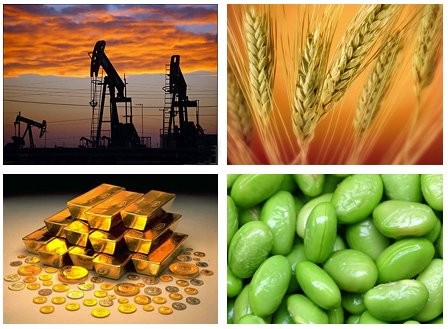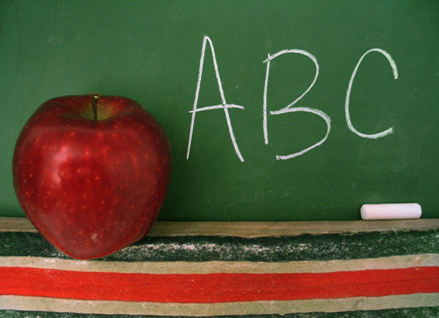What you need to know about commodities ETFs
Post on: 18 Июль, 2015 No Comment

By John Waggoner, USA TODAY
Investors can now choose from more than 75 exchange traded funds (ETFs) that invest in commodities: corn, silver, nickel and even lithium.
Commodity prices are volatile, and for many years, they were a market dominated by producers farmers and mining companies, for example and speculators.
The question, then, is what part, if any, a commodity fund should play in your portfolio. The answer: for most people, not much. Although commodities can diversify a portfolio of stocks and bonds, the limitations of some commodity ETFs reduce much of the advantages.
Modern portfolio theory holds that mixing different broad types of investments stocks and bonds, for example reduces risk and improves risk-adjusted returns. Anyone who has invested for the past decade has seen this in action. If you had invested in the Standard & Poor’s 500-stock index, for example, you would have lost 13.3% since Dec. 31, 1999. Had you put 40% of your money in the Barclay’s U.S. Treasury index, however, your portfolio would have gained 25%.
You get the improved performance because stocks and bonds don’t move together in lockstep in fact, they often move in opposite directions. (Had you followed the same strategy in the roaring 1990s, you would have reduced your gains, but you would also have lowered its overall risk.)
Bonds aren’t the only diversifier. Mixing in other asset classes that are not closely correlated to each other can reduce risk. And commodities are poorly correlated to stocks. Let’s say you had invested $10,000 in the S&P 500 index at the end of August 2000. You’d have $8,330 today. Had you put 40% of your portfolio into the CRB index, you’d have $9,512 not as good as the $11,915 you would have had from a similar mix of stocks and Treasury bonds, but still better than stocks alone.
Commodity funds work best as a hedge against inflation which is, broadly defined, a period of rising prices. Bear in mind, however, that poor correlation doesn’t mean commodities and stocks move in opposite directions. When investors are worried about falling prices, for example, commodities and stocks can fall together.
Contango tango
Although you can invest in funds that track the S&P 500, you can’t invest in one that tracks the CRB index yet. But you can invest in a number of commodity ETFs that track other indexes. Yet commodity ETFs have their own problems.
With the exception of gold, silver and other precious metals, it would be hard for a mutual fund to hold the commodity itself. Money managers aren’t equipped to warehouse a herd of cattle, a silo full of corn or tanks full of orange juice.
So most commodity ETFs invest a small amount of their assets in futures contracts, and park the rest in Treasury securities, on which they earn interest. A futures contract is an obligation to buy or sell a commodity at a set price by a specific date. A CME corn contract, for example, is for 5,000 bushels of corn. If you buy a futures contract and hold it until the settlement date, you’ll be the proud owner of about 127 metric tons of corn. For that reason, most investors exit their positions before the contract is due.
Many commodity ETFs simply buy contracts that are the closest to their settlement date and roll them into the next contract as the settlement date approaches.
The problem with this strategy: Let’s say futures traders are bullish on December copper, and the going price for a contract is 3.27 cents per troy ounce. (A single contract is for 25,000 pounds of copper.) The current price that real people pay for real copper, called the spot price, is 3.10 cents per troy ounce.
If spot copper prices don’t rise as you expected, the price of the futures contract will decline until it reaches the spot price at the contract expiration. And if the next-nearest contract is at a higher price than spot, the fund will have to pay up to buy that contract. (If you want to talk like a futures trader, this is called contango.) As a practical matter, it means two things:
The fund could lose money on its contracts, creating a drag on performance.

The fund’s share price probably won’t track the commodity price terribly accurately.
If you look at the returns from spot prices and in realized futures returns, what you see is that they diverge radically, says William Bernstein, author of The Investor’s Manifesto .
Not all funds have contango problems, but it’s still an issue for many commodity ETFs.
How to use commodity funds
You can use commodities to diversify your portfolio, particularly if you’re worried about inflation. But it can be hard to find an ETF that fits the bill for the average investor.
First, leave the specialized and exotic commodity ETFs to the speculators. Your portfolio will be just fine without a position in corn or steel. If you’re comfortable with the tracking problems that futures-based ETFs have, consider a broad-based commodity ETF, such as the iShares GSCI ETF (ticker: GSG). It follows the S&P GSCI index, which tracks a basket of commodities. Another choice: The Deutsche Bank Commodity Index fund (DBC). Both have a heavy weighting in energy.
Some ETFs that invest in precious metals do buy and sell the physical metal, and so track the spot price fairly accurately. A gold ETF won’t give you exposure to the full range of commodities, but as a hard asset, it does tend to rise when overall commodity prices rise. Two to consider: SPDR Gold Shares (ticker: GLD) and iShares Comex Gold (IAU).
Bear in mind, however, that gold prices are near an all-time high, which is often not the best time to buy. Anything is a decent inflation hedge if you buy it at the right price, says Kurt Brouwer, a financial planner in Tiburon, Calif. If you buy gold at $1,300 an ounce and it trades down to $1,200, then you don’t have much of an inflation hedge, he says.














